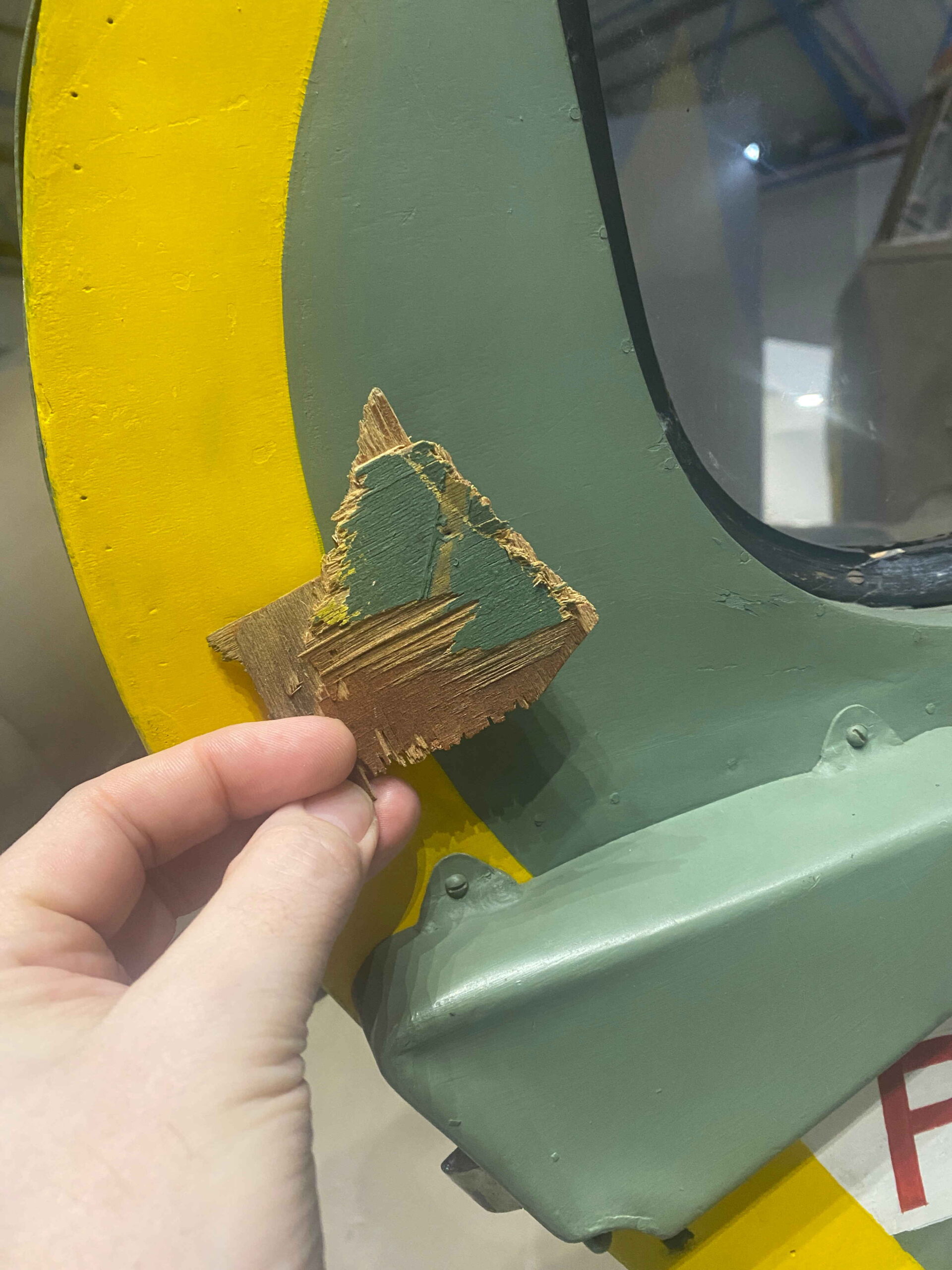Amy Johnson plane fragment in sale
A unique fragment of wreckage from the last plane flown by pioneering British aviator Amy Johnson in 1941 has been discovered. Believed to be the only piece from the aircraft in existence, the 83-year-old relic is expected to spark a global bidding battle at auction. It’s believed to be from the parachute exit door which Amy would have used to leap out of her stricken plane.
Mystery still surrounds her death at the age of 37. Amy, the first woman to fly solo from London to Australia, lost her life in an aviation accident on January 5, 1941. Though adverse weather conditions were blamed, it was later claimed that her plane may have been downed by friendly fire.

When tragedy struck Amy Johnson was piloting an Airspeed Oxford for the WW2 Air Transport Auxiliary from Prestwick to RAF Kidlington, near Oxford. Reportedly out of fuel, she bailed out as her aircraft crashed into the Thames Estuary near Herne Bay.
Her body was never found but the story of her life has re-emerged thanks to the discovery of the plane fragment. It will be offered by Hansons Auctioneers on February 28 with an estimate of £1,000-£2,000.
Matt Crowson, Head of Militaria at Hansons, said: “I was amazed to receive an email asking, ‘Would I be interested in a piece of Amy Johnson’s aircraft wreckage’. The item was inherited by our vendor from his uncle, Ronald Arthur Clark, both from Enfield, North London. Ronald said he’d scooped it out of the water and put in his pocket during efforts to rescue Amy.
“Back in 1941 Ronald was an Able Seaman on HMS Berkeley, an escort vessel in the English Channel. It was among ships which attempted to rescue Amy after her parachute was spotted coming down. She was seen alive in the water, calling for help. However, conditions were poor. There was a heavy sea and a strong tide, snow was falling and it was intensely cold. Ropes were thrown to Amy but she couldn’t reach them. Her flying bag, log book and cheque book later washed up nearby.

“The discovery of the plane fragment is significant. No other pieces of the aircraft are thought to exist. Some sources say the plane may have been recovered and quickly burnt, perhaps suggesting a cover–up of a friendly-fire incident.
“The fragment is constructed from two layers of thin plywood, glued together and set at a 45 degree angle to provide maximum strength. The surface paint has been compared to an existing Airspeed Oxford in London’s RAF Museum. Given the distinctive green shade and traces of yellow, it’s likely the piece was from the parachute exit door. This was the only part of the aircraft constructed from ply, the fuselage section being linen covered.
“The reverse of the fragment was inscribed by Ronald Clark at the time. It states, ‘piece of fuselage from Amy Johnson’s plane, crashed 1941’. Ronald’s Royal Navy service records confirm his service on HMS Berkeley at the crash site in 1941. The vendor remembers his uncle telling him the story in the 1950s and showing him the fragment. The technical aspects of the style of manufacture, paint colours, service records, anecdotal evidence, and the fact that this type of aircraft would not have routinely been in the area, all add up to it being correct.

“Amy broke the mould for women and raised expectations about what they could achieve in life. In the pre-war years, she worked as a commercial pilot, a journalist, and a even fashion model, creating her own travelling bag. Early in WW2 she joined the Air Transport Auxiliary, which transported RAF aircraft round the country.
“We can never be absolutely certain what happened to her that fateful day in 1941, other than it was a terrible accident. In 1999, it was reported her death may have been caused by friendly fire. Sussex man Tom Mitchell claimed to have shot her aircraft down when she twice failed to give the correct identification code during the flight. He said, ‘16 rounds of shells were fired and the plane dived into the Thames Estuary. We all thought it was an enemy plane until the next day when we read the papers and discovered it was Amy. The officers told us never to tell anyone what happened’.
“Sadly, it was also later claimed Amy had been sucked into the blades of a ship’s propellers during the rescue bid. A tragic end for a live lived to the full. We hope this discovery will shine new light on the life of Amy Johnson and remind new generations of her indomitable spirit of adventure.”


